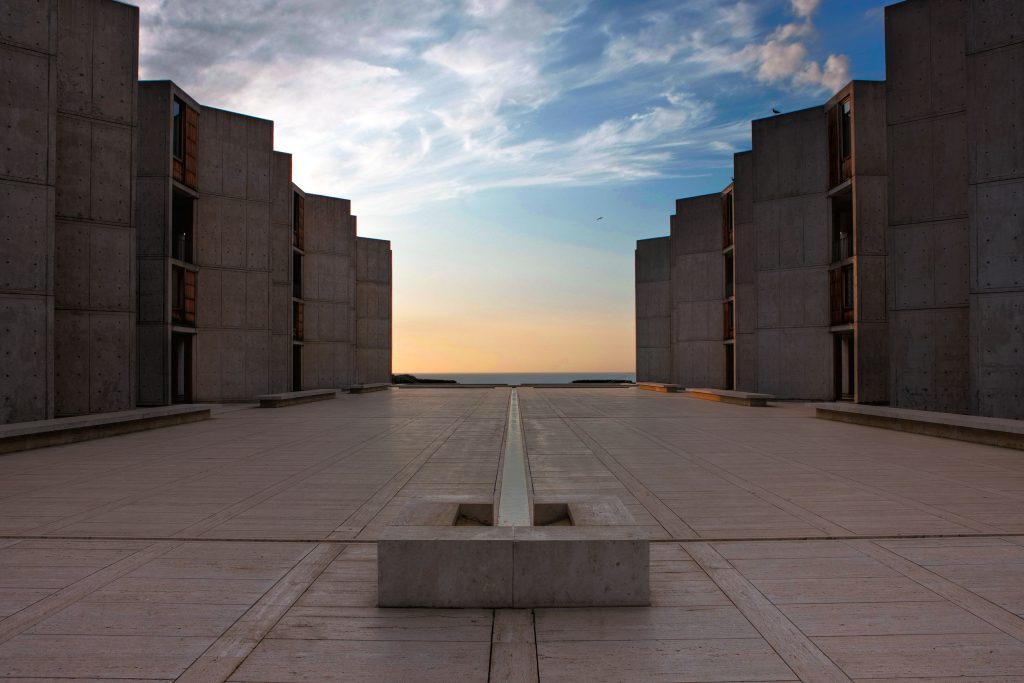Louis I. Kahn (1901-1974), one of the most well-known architects of the 20th century, died of a heart attack in Penn Station at the age of 73. He was nearly bankrupt and on his way home from India.
He was born in Estonia. His family moved 17 times in his first two years of life, a pattern that repeated during his own nomadic adulthood.
Kahn was short (5 feet 6 inches) with a gravelly voice and conspicuous facial scars from burns sustained as a child. He was also magnetically charismatic and an almost fanatically hard worker.
“He was not controllable,” people said of him. “He didn’t know day from night.”
Symmetry, order, principled, fundamental, primitive and exhilarating were some of the words used to describe his work.
“It’s important that you honor the material you use,” he once told a group of students. “You say to a brick, ‘What do you want, brick?’ and brick says to you, ‘I like an arch.’ ”
Twenty-five years after Kahn’s death, his fellow architect Philip Johnson observed, “He was his own artist. He was free compared to me.”
He didn’t hit his stride until his mid-60s. In his life, he designed maybe eight to 10 truly notable buildings.
But that handful is stamped with the mark of genius.
The Salk Institute in La Jolla is one of them.
In 1959, Jonas Salk approached Kahn with the idea of designing a research institute, overlooking the Pacific just north of San Diego. The two were a wonderful match. Salk had experienced a breakthrough in the formula for his polio vaccine while visiting the Basilica and Friary of St. Francis of Assisi in Italy. Kahn, with his mystic sense, thought to incorporate the spirit of the cloister.
Today, the institute is open to the general public by tour. In one way, the utter lack of adornment gives the opposite impression of a church. In another, the sense upon mounting the plaza is so definitively of sacred space that I had to resist the urge to genuflect.
A vast empty plaza is banked by two tall angled towers of concrete, steel, glass and teak. A narrow watercourse bisects and runs the length of the plaza. Beyond, like a mirage on the horizon, lies the merest strip of blue ocean.
The effect is spare and austere. From the far end of a colonnaded walkway, a row of rectangular openings perfectly aligned in seemingly decreasing size stretch toward the ocean.
At first glance, the design seems simple. But as you wander through, a seemingly infinite number of interesting angles, shadowed recesses and layers reveal themselves. The permutations of shadow, light, line, fluidity, mystery and space gradually come to seem inexhaustible.
Each scientist has a studio and a separate lab, each with an unobstructed view of the ocean. The towers are six stories high with the lower two below ground level. Every other story houses infrastructure, so repairs and upgrades are simple, inexpensive and need not disturb the flow of those working in the building.
Kahn was 65 when Salk was completed. The scientists said that not only was the institute beautiful, it worked. He said it was the first building with which he was really happy.
But Kahn had a shadow side. During his lifetime, most people didn’t know that he had three families. One was with his wife Esther, to whom he was married until his death, and their daughter Sue Ann. Another was with fellow architect Anne Tyng, with whom he fathered a daughter, Alexandra. A third was with Harriet Pattison, a landscape designer, and their son Nathaniel.
Nathaniel was 11 when Kahn died. As an adult, he went in search of his father and made the award-winning documentary “My Architect: A Son’s Journey.” He interviewed his own mother, Anne Tyng, and his two half-siblings. That none of them seem to harbor any deep resentment toward Kahn may say as much about the man as his buildings.
“He was a man of agony,” observed Bangladesh architect and colleague Shamsul Wares. “[The National Assembly Building] is the largest project he had, in the poorest country in the world. He paid. He paid his life for that. … But he was also human. … In his social life, he was like a child. He couldn’t say no to anything. And that is why we have this building today. He has given us this building [choking up]. He has given love for us. He had an enormous amount of love. He loved everybody. To love everybody is sometimes not to see the very closest ones.”
Perhaps. And perhaps, as is true of most of us, Kahn was a mystery even to himself.
“There’s something that pulls on you,” he said upon completing Fort Worth’s Kimbell Museum, “as though you were reaching out to something primordial, something that existed much before yourself. You realize when you are in the realm of architecture that you are touching the basic feelings of man and that architecture would never have been part of humanity if it weren’t the truth to begin with.” ÓÉä
Interested in more? Subscribe to Angelus News to get daily articles sent to your inbox.

